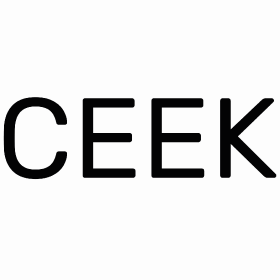We connect you with the best and most reliable agency partners for your projects. All DAN members are thoroughly vetted and ready to deliver exceptional results.

Featured Agencies
Prominent Hospitality Marketing Agencies of UK
-
Creative Brand Design
An award-winning London Digital Agency, specialising in Digital Marketing Services, SEO Optimised Website Design and Bespoke Web Development.Services- Web Design
- Web Development
- UX Design
- SEO
- eCommerce
- Branding
- Creative
- Digital Strategy
Industries- Travel & Tourism
- Finance
- Automotive
- Hospitality
- Energy
- IT & Technology
- Telecommunications
- Gaming
Select a region, city and industry type to discover the best digital marketing agencies!
DAN Member Agencies
Providing Hospitality Marketing Services in UK
All hospitality marketing agencies in the UK have been vetted and verified against the following criteria:
- Portfolio Quality
- Reliable Services
- Sectoral Expertise
- Team Transparency
If you have any feedback regarding the agencies, please contact us.
-
Polar
HQ: London+2 cities- UK
- Essex
- USA
- Utah
4.9The rating displayed is a weighted average derived from verified reviews across trusted platforms, further validated by the DAN team for agency authority.Gold MemberCrafting brands, websites, and campaigns that envision your goals, capture your ethos, and make a difference. Get in touch today for a no-obligation consultation.Services- Branding
- Creative
- Crypto & NFT
- Web Design
2-102 Awards -
Catch Digital
HQ: LondonStandard MemberCatch is a digital platform specialist. We focus on building exceptional digital experience platforms as we believe that with the right platform anything is possible.Services- Branding
- Creative
- Digital Product Design
- Digital Strategy
- eCommerce
- Email Marketing
- Mobile App Development
- SEO
- UX Design
- Video Production
- Web Development
11-50 -
ProfileTree
HQ: BelfastGold MemberCreates award-winning content campaigns through written word or video production. This is supported by SEO and Digital Strategy.Services- AI Marketing
- B2B Marketing
- Content Marketing
- Digital PR
- Digital Strategy
- eCommerce
- Inbound Marketing
- Marketing Automation
- SEO
- Video Production
- Web Design
- Web Development
11-50 -
Harrison Carloss
HQ: Manchester+1 city- UK
- London
5.0The rating displayed is a weighted average derived from verified reviews across trusted platforms, further validated by the DAN team for agency authority.Gold MemberDon’t bring us the answer, just the problem. We're a strategy-led creative and digital agency with a passion for problem-solving.Services- Digital Strategy
- Software Development
- Creative
- B2B Marketing
- Marketing Automation
- Branding
- eCommerce
- PPC
- SEO
- UX Design
- Web Development
- Web Design
11-50 -
Creative Brand Design
HQ: London5.0The rating displayed is a weighted average derived from verified reviews across trusted platforms, further validated by the DAN team for agency authority.Standard MemberAn award-winning London Digital Agency, specialising in Digital Marketing Services, SEO Optimised Website Design and Bespoke Web Development.Services- Web Design
- Web Development
- UX Design
- SEO
- eCommerce
- Branding
- Creative
- Digital Strategy
11-502 AwardsAgency of the MonthFeatured Agency -
Found.
HQ: LondonStandard MemberWe're Found, the Everysearch™ agency. A master of search performance across all digital marketing platforms.Services- Content Marketing
- Digital PR
- Digital Strategy
- Online Advertising
- PPC
- SEO
51-2005 Awards -
Studio Graphene
HQ: LondonStandard MemberStudio Graphene designs and builds digital products leveraging AI and emerging technologies to bring new ideas to life.Services- eCommerce
- UX Design
- Software Development
- Digital Product Design
51-200 -
Frost Creative
HQ: SouthamptonStandard MemberWE ARE THE DIFFERENCE MAKERS! Do the same old stuff. Get the same old results. Frost is the strategic branding + creative consultancy to help you turn heads by turning up the volume on what makes you unique.Services- Creative
- Online Advertising
- Web Design
- Web Development
- UX Design
- Video Production
- Branding
11-502 Awards -
The Brand Tailor
HQ: SouthamptonStandard MemberThe Brand Tailor is a Design & Branding Agency in Southampton, Hampshire UK, providing strategy, identity and website design for businesses, start-ups and entrepreneurs.Services- Branding
- Creative
- Digital Marketing
- Digital Product Design
- SEO
- UX Design
- Web Design
- Web Development
2-10
Best Digital Marketing Agencies by Industries in UK
Explore the best digital marketing agencies in UK specializing in the industry you need
- Automotive Marketing Agencies in UK
- Beauty & Cosmetics Marketing Agencies in UK
- Digital Marketing Agencies in UK
- Education Marketing Agencies in UK
- Energy Marketing Agencies in UK
- Fashion & Retail Marketing Agencies in UK
- Finance Marketing Agencies in UK
- FMCG Marketing Agencies in UK
- Food & Beverage Marketing Agencies in UK
- Healthcare Marketing Agencies in UK
- Insurance Marketing Agencies in UK
- IT & Technology Marketing Agencies in UK
- Legal Marketing Agencies in UK
- Luxury Marketing Agencies in UK
- Media & Entertainment Marketing Agencies in UK
- Non-Profit Organization Marketing Agencies in UK
- Real Estate Marketing Agencies in UK
- Sports Marketing Agencies in UK
- Startup Marketing Agencies in UK
- Telecommunications Marketing Agencies in UK
- Travel & Tourism Marketing Agencies in UK
- Wellness & Fitness Marketing Agencies in UK
How to Choose the Right Hospitality Marketing Agency in UK?
In today’s competitive market, the most vital problem hospitality brands confront is outperforming their competitors. This is where digital marketing services come in to assist hospitality businesses stand out and get a competitive advantage. Digital marketing companies use multiple tactics to significantly improve website traffic, email list and blog subscriptions, and social media engagement.
Restaurants and hotels should hire a digital agency with experience in hospitality marketing to help them rank well in search engines, increase traffic to their website and social media accounts, run customer-driven and local PPC advertisements, and more. The recommended marketing agencies should also be knowledgeable about current trends and developments in the hospitality business.
When searching for a full-service hospitality digital marketing agency in UK, look for their unique characteristics and the tactics they offer to use to assist your company’s growth. Examine their website for successful case studies or even award-winning designs built specially for hospitality businesses such as restaurants, hotels, event organizing agencies, and theme parks. With the help of skilled digital marketing services, you can become a well-known and sought-after hospitality establishment.
Free Listings
of Hospitality Marketing Agencies in UK
-
Bear Creative
Where strategy meets creativity – helping brands grow with data-driven design and compelling storytelling.
HQ: Brighton -
MAJOR Digital
Website Innovation Made Simple- Your trusted digital allies in a technically complex world.
HQ: Brighton -
Clifton Web Design
Based in Bristol, UK, creating bespoke, user-friendly websites tailored to meet the unique needs of businesses across the UK.
HQ: Bristol -
seoBusiness
At seoBusiness, we help growth-ambitious SMEs turn their digital presence into a powerful engine for business growth.
HQ: Manchester -
D&M Creative
22 years in the business (of smashing the results for clients) has given us our edge.
HQ: Manchester
Articles and Case Studies on Hospitality Marketing

































































